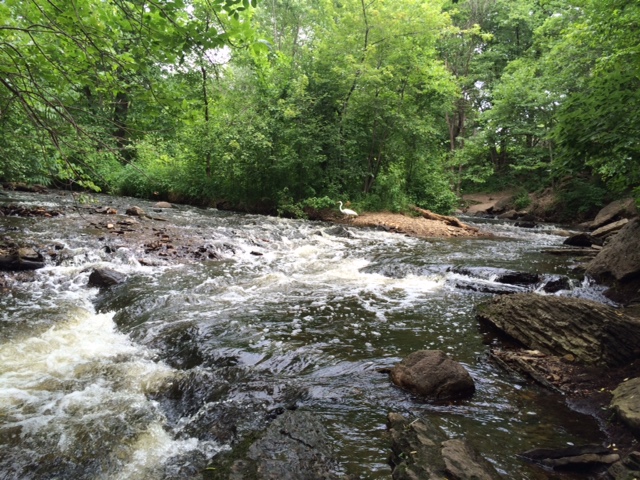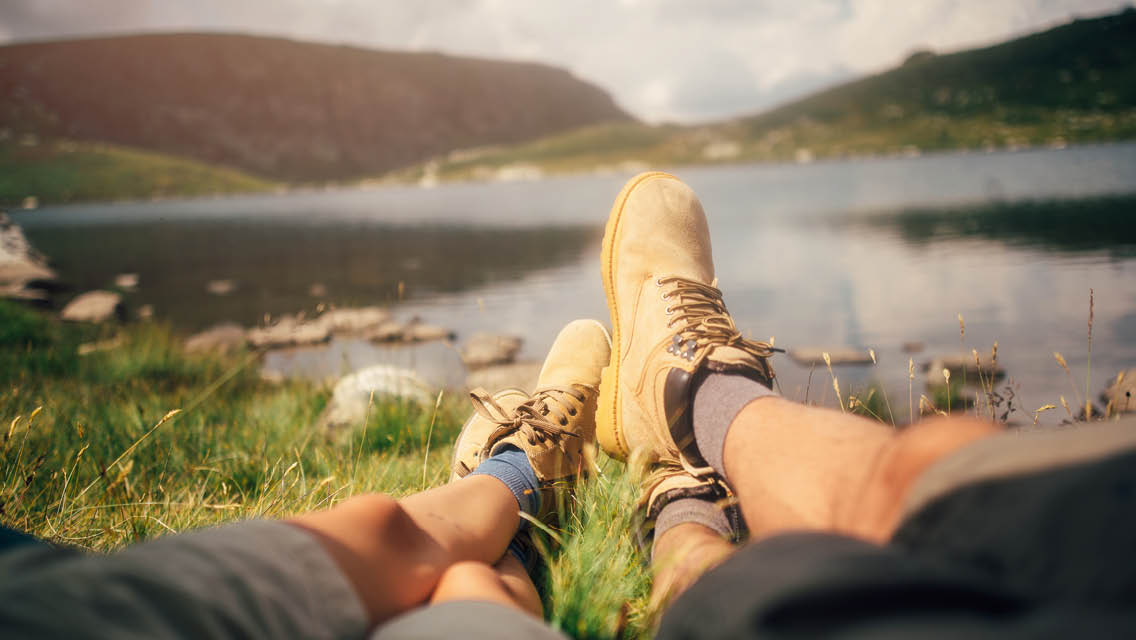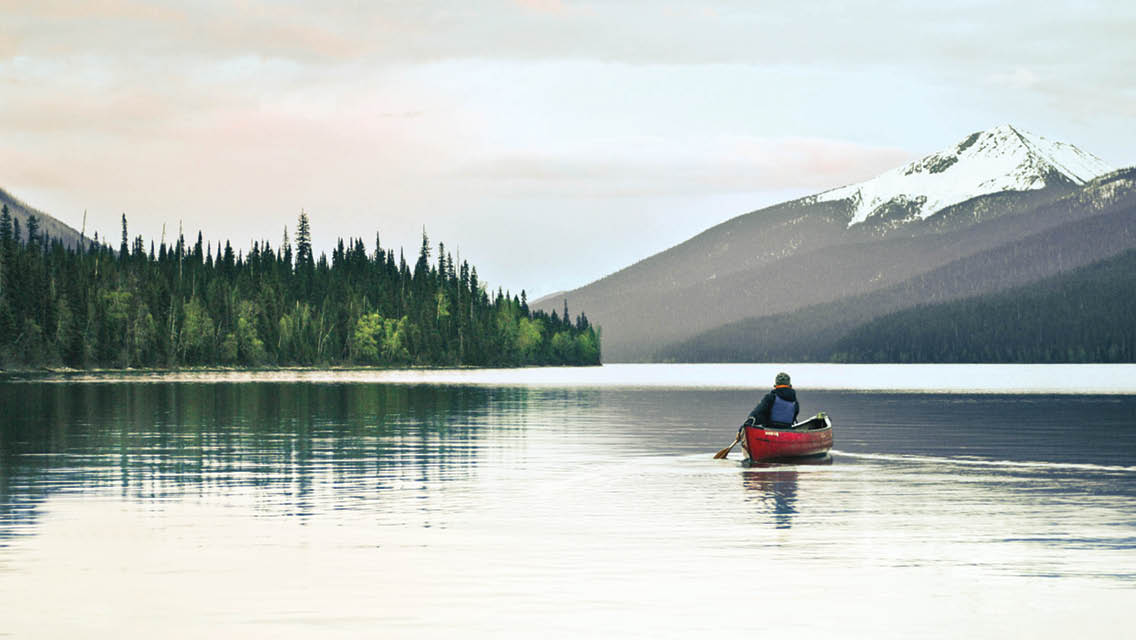I was raised in rural Minnesota and spent most of my childhood deeply engaged with the outdoor world that surrounded me. Creeks, cornfields, dark woods, grassy hills—from sunup to sundown (and sometimes long past), they were my playground, my home, my rightful place.
After moving to the city to start my career, I felt that something was missing from my life. It seemed to be something important, though I couldn’t quite name it. Eventually, my career took me to a company located outside the metro area. I moved away from the city, green space replaced concrete space, and finally, I figured it out. I am a person designed and built to be in nature.
I hunger for nature. It’s a hunger that has been with me a long time, and I believe that on a deep level, it is a hunger we all share. The bulk of our human existence has been inextricably intertwined with the natural world. Relative to the thousands of years homo sapiens have been walking the planet, our species’ move away from a nature-centered existence and into paved, densely populated cities and climate-controlled buildings is a very recent, and distinctly un-natural, development.
While many would consider our current living situation a great improvement over the brutal struggles of earlier times, at the core we all still belong to – and in – the natural world. Genetically, it makes sense that our bodies should be disposed toward spending time in close contact with nature. And yet, how much time do any of us spend in forests and in large bodies of water, on craggy mountains looking out at vast views, in lush valleys smelling plants and earth? My guess is, not nearly enough.
Daily Allowance
Science has shown that spending inadequate time in natural light can affect our circadian rhythms (body clock), and by extension, our body chemisty. Serotonin, melatonin and a host of other hormones and neurotransmitters secreted by our brains are all directly affected by exposure to natural light.
Seasonal Affective Disorder (SAD) is a formal-sounding diagnosis that actually describes a whole collection of maladies, including depression and fatigue, most of which have been closely linked to natural-light deficits. Some research also suggests that getting starlight and moonlight in our retinas plays an important role in supporting our neural micro-circuitry.
Increasingly, our sciences are providing evidence for truths that our bodies have always known, namely, that spending time outdoors is essential to our immunity, our mental health and even our metabolic function. But whatever the scientific reasons, most folks – even cynical, insect-averse, die-hard city dwellers – find that getting out into nature offers them something of innate and intensely personal value. Even if it is just several deep lung-fulls of fresh, oxygen-rich air.
Mental Break
One great gift of nature is that it helps us improve our sense of balance and perspective. It shifts our outlook, often in surprising ways. In particular, nature helps us break our obsessive patterns of thinking.
The philosopher Eckhart Tolle tells us that only 5 to 10 percent of the thoughts that pass through our minds are new thoughts. Everything else is a rehashing of old information.
We crowd our minds with details, reliving the past and worrying about the future. In the midst of this mental chatter, it’s hard for us to notice the present moment, much less entertain new ideas.
In a natural environment, things slow down, new vistas open to us and we instinctively shift into a different gear. We interact with the world in a more intimate, focused way.
As we become absorbed in the beauty of nature, the internal chatter quiets. Our repetitive thinking patterns subside, creating enough space for new synapses and new ideas to pop in. This is why time spent in nature often helps us ignite creativity.
Stepping into the natural world encourages us to step out of our life routines long enough to reflect on whether or not we are living the life we want. Once we break out of our habitual patterns and ruts, we can see the bigger picture. This change of pace offers us the opportunity to question where we are headed and, if we wish, to change course.
Back to the Garden
Reintegrating nature into our lives may mean retracing a path back to what many of us last knew as children. Back then, nature was a mysterious place full of secrets that were ours to discover. We splashed in mud puddles, dug in the dirt, hid behind trees, picked flowers, laid in the grass, and studied caterpillars as they scrunched their way along twigs, often losing ourselves in these activities for hours on end.
As adults, we rarely take this kind of time for anything. Even more important than time, though, is intention and focus. Whether your next nature foray is for 10 minutes or 10 days, practice giving your total attention to being in your chosen environment. Use all of your senses: How many different sounds do you notice? Breathe deeply, taking in all of the scents in the air. Study your surroundings – what do you see when you really look? Touch your surroundings – how do the leaves, trees, rocks, and dirt feel?
Your result will depend upon the fierceness of your focus. Distraction and rushing will dilute your experience, so if you decide to get nature time by cutting across a city park while answering voicemails on your cell phone, don’t expect too much.
One other thing to keep in mind: We all need a certain amount of alone time in nature, and we also need to experience it with others. Once you’ve rediscovered your natural inclinations, don’t keep them secret. Share your new world with your partner, children, friends and other special people. Plan to do more of your daily activities outdoors. With regular practice, you’ll harvest the benefits of once again making nature an intimate part of your everyday life.
9 Quick Nature Escapes
- Get up early, go outside, lie on a blanket on the ground and watch the sun rise. Or, if you wake up in the middle of the night, consider stepping out and doing some stargazing instead of watching TV.
- Contact a garden club and inquire about local public gardens. Visit greenhouses and botanical conservatories during early spring and winter. Breathe in the moist smells of living things.
- Plan a weekend adventure with your family, staying at or near a state park. Leave behind all your electronics and spend every possible moment exploring the landscape.
- Even if you’ve never gardened before, start planning this winter how you might convert a small, sunny section of your lawn into a fresh tomato and herb garden next spring. Getting your hands in the dirt and touching and smelling the plants as they grow can be a deeply gratifying experience.
- Bike, hike, canoe, climb or cross country ski at city, state or regional parks. “Silent sports” are a great way to experience out-of-the-way places.
- Next time you find yourself near any kind of forest, do a little exploring. Climb a tree. Poke around under stones and logs like you did when you were little. Contact the Nature Conservancy (www.nature.org) to locate accessible properties in your area.
- Make a point of connecting with the elements. Next time it starts snowing, drop everything and go outside to watch it fall. Take a moonlit walk by yourself and enjoy the crunch of snow under your boots.
- Plan a short retreat at a spiritual center located in a natural setting. Web sites like www.retreatsintl.org will help you start your search.
- If you get really desperate, just walk out the door, sit down on the first open ground you come to and close your eyes. Feel the sun on your face, the air around you, the earth under your body, and remember – you are a part of the planet, formed from billion-year-old carbon and stardust. You belong here.
This article originally appeared as “Natural Hunger” in the November 2001 issue of Experience Life.




This Post Has 0 Comments